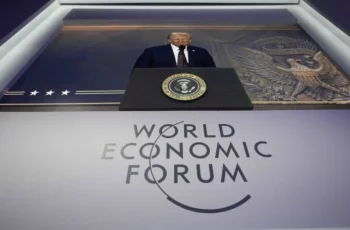
How do we commemorate it? The atomic attacks on Hiroshima and Nagasaki during the Second World War on August 6 and 9, 1945 by the United States remain the only examples of the use of such a weapon in history. Rather than banishing any temptation to use them, the wholehearted killing of tens of thousands of civilians through experimental designs laid the grounds for an arms race that has never dissipated. Once found, the military use of the atom was never abolished or dissipated. As Henry Stimson, US Secretary of War, put it to President Harry Truman in April 1945, “if the problem of the proper use of this weapon can be solved, we would have the opportunity to bring the world into a pattern in which the peace of the world and our civilization can be saved.”
After eight decades, we have two diametrically opposed trends, babbling in separate halls. Non-nuclear weapons states, for the most part, are showing fortitude and resolve in stigmatising the nuclear bomb through such instruments as the Treaty on the Prohibition of Nuclear Weapons. Others, such as a neutered, heavily vassalized Australia, prefer the comfort of extended deterrence offered by the US nuclear deterrent. But the aristocrats and landed gentry of the nuclear club continue to retain their prized assets, seeking to modernise and refurbish them. Like prized livestock, these creatures need feeding and watering, not forced retirement. In 2024, the Stockholm International Peace Research Institute documents, the US, Russia, the UK, France, China, India, Pakistan, North Korea and Israel “continued intensive nuclear modernization programmes […] upgrading existing weapons and adding newer versions.”
This whole process has been characterised by a certain snobbery, one encouraged by the 1968 Treaty on the Non-Proliferation of Nuclear Weapons. The document legitimised the sanctity of the nuclear club by means of bribery: non-nuclear weapon states could still avail themselves of nuclear energy for peaceful purposes while nuclear weapons states would abide by the promise of Article VI. “Each of the Parties to the Treaty,” states the article, “undertakes to pursue negotiations in good faith on effective measures relating to cessation of the nuclear arms race at an early date and to nuclear disarmament, and on a treaty on general and complete disarmament under strict and effective international control.”
The NPT, and in particular Article VI, is looking increasingly worn. Executive director of Project Ploughshares, Cesar Jaramillo, is merely stating the obvious by referring to two stresses at work on those arrangements: an internal one marked “by the persistent failure of nuclear-weapon states to meet disarmament obligations” and an external one characterised by “shifting geopolitical dynamics that threaten to dismantle longstanding norms.”
Unfortunately, the events of this year, particularly regarding the illegal attack on Iran’s nuclear facilities and infrastructure by Israel and the United States, continues to demonstrate the appeal of such weapons. On the pretext of claiming how horrifying such arms are in terms of acquisition and potential use, the two countries demonstrated their quintessential value. The implications of Operations “Rising Lion” and “Midnight Hammer”, the respective names given to the Israeli and US bombing operations against the Fordow, Natanz and Isfahan nuclear facilities in June, bode ill. The absurdity of this action was laid bare by the fact that Iran had originally surrendered its quest for a nuclear weapon by joining the Joint Comprehensive Plan of Action (JCPOA) that the US decided to leave in 2018. That Tehran subsequently enriched uranium to the level of 60 per cent was something to draw the surly attention of the International Atomic Energy Agency, but it was still below the 90 per cent required for weapons-grade production.
As the bombs fell, the grand defenders of international law were nowhere to be found. When they bothered to make an appearance, they scolded Iran for nursing nuclear ambitions of its own, sparing any chastening words for Israel, an undeclared nuclear power that decided years ago to join the nuclear club as a prancing upstart sneering at international treaties, even as it decided to deny the entitlement of any power in the Middle East to do the same. The words of Australia’s Foreign Minister, Penny Wong, were typical of this: “The world has long agreed Iran cannot be allowed to get a nuclear weapon, and we support action to prevent this. That is what this is.”
The tragic lesson of the June attacks on Iran’s nuclear infrastructure adds succour to the proposition that not having such a military capability, and more to the point, being told not to acquire one, endangers the state in question. The North Koreans, having witnessed the demise of the regimes of Saddam Hussein in Iraq and Muammar Gaddafi in Libya to foreign invasion and interventions despite both having abandoned their nuclear programs, studied that lesson with avid keenness. In Europe, countries concerned about a loss of interest from the Trump administration in extending its nuclear deterrent – an infantile notion given the presence of some 100,000 US soldiers and 100 tactical nuclear weapons on the continent – are mulling over a collective option that could involve a “Eurobomb”. The pollen of proliferation is in the air.
The nuclear club, to admit members, requires stupendously good references (is the candidate clubbable or not?), powerful patrons and shed loads of hypocrisy. Short of that, the country must acquire nuclear weapons clandestinely, a point Israel knows better than most. Once admitted to the inner sanctum, membership guarantees both security and an eternal reluctance that a sovereign option, once attained, should ever be relinquished.










Comments